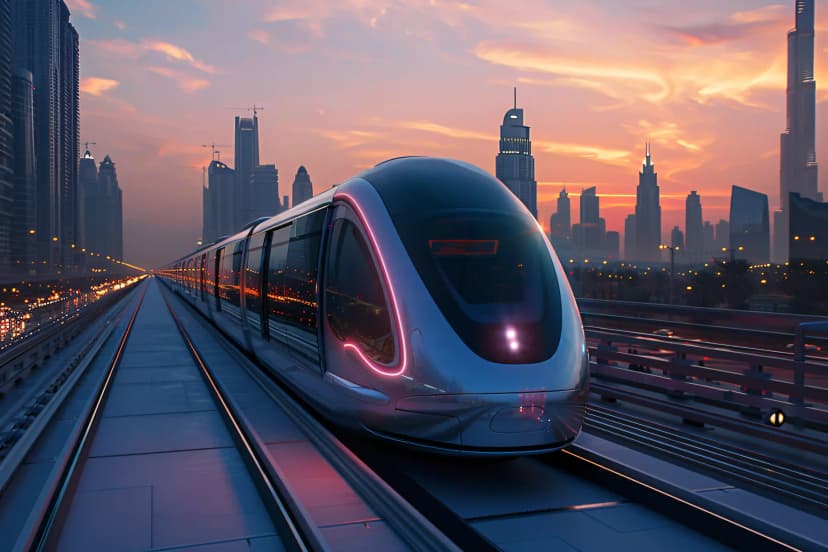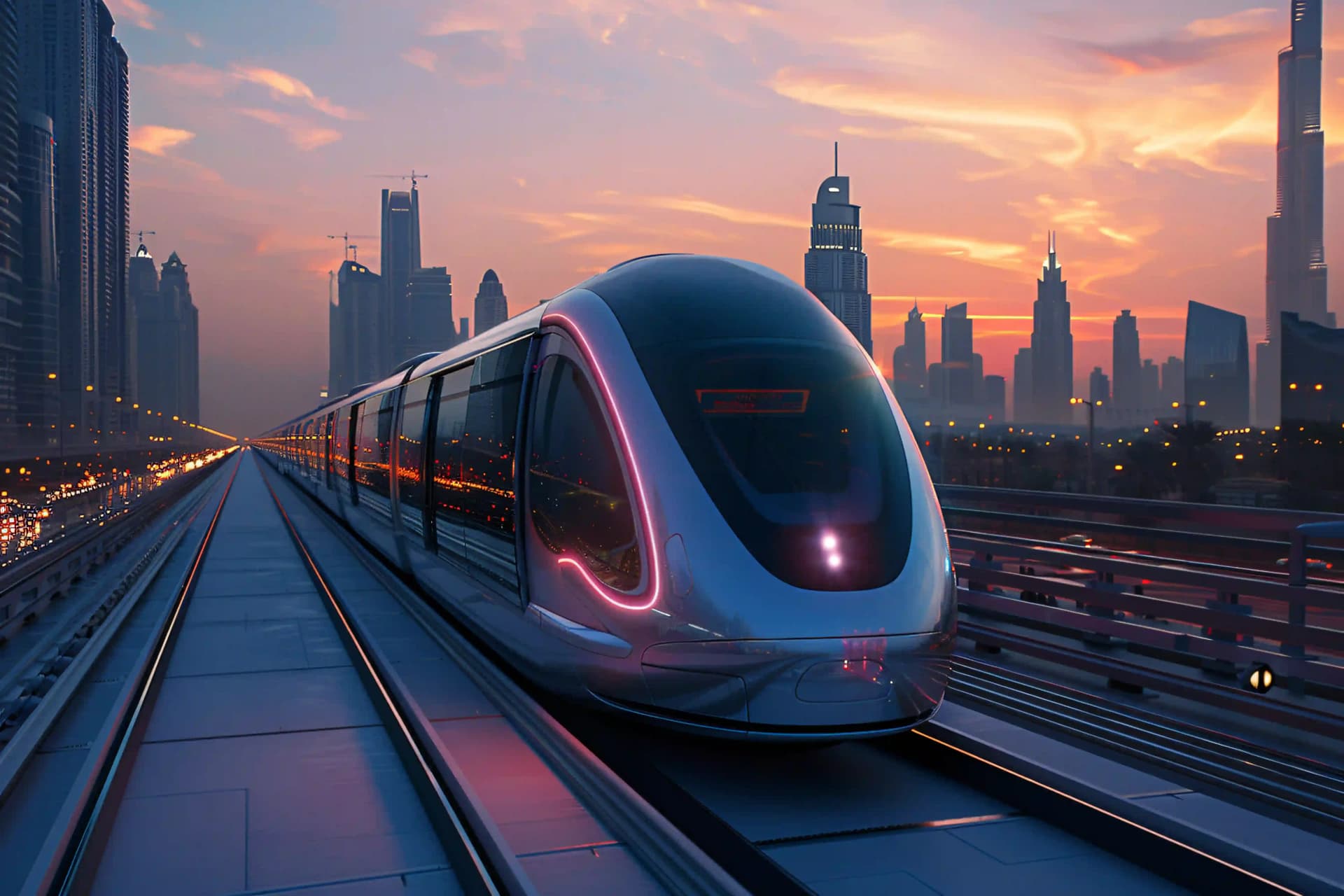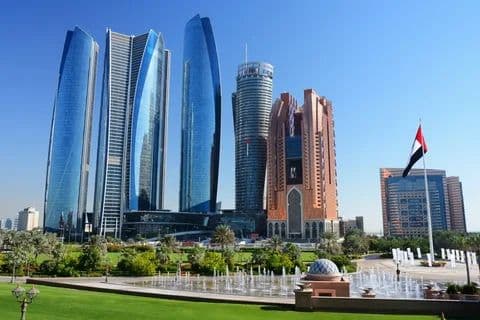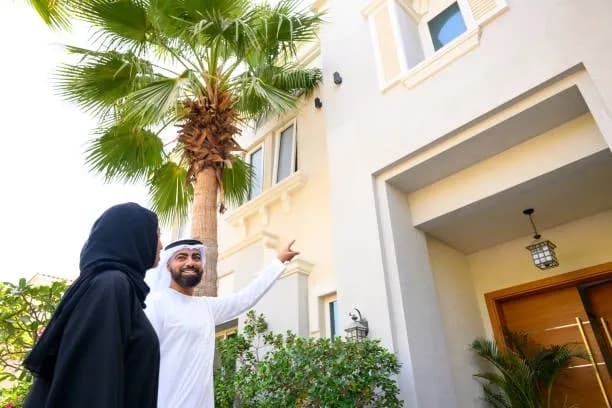The Dubai Metro is a symbol of the city’s rapid urban transformation, efficient, automated, and designed to meet the needs of millions. Whether you’re a resident or visitor, understanding the Metro system helps you navigate the city with ease. One of the most commonly asked questions is: how many metro trains in Dubai? We'll explore this question in detail while also uncovering the infrastructure, services, and rider tips for the Dubai Metro in 2025.
How Many Metro Trains in Dubai?
If you are wondering how many metro trains in Dubai, you are in the right place. As of 2025, there are 129 metro trains in Dubai, serving the Red and Green Lines. This fleet includes the original 79 trains delivered for the launch and an additional 50 modern trains added in preparation for Expo 2020 and increasing demand. These trains are fully automated and driverless, operating under a Grade of Automation 4 (GoA4) system, one of the most advanced in the world.
Dubai Metro’s trains are designed to handle peak-hour traffic efficiently, with each train having the capacity to carry approximately 650 to 700 passengers. The high frequency and short headway between trains allow thousands of riders to commute comfortably across the city every hour.
By frequently expanding its infrastructure, the Roads and Transport Authority (RTA) ensures that the answer to how many metro trains in Dubai continues to grow in alignment with the city’s evolving transit needs.
Dubai Metro Lines: Red, Green & Future Extensions
After knowing how many metro trains in Dubai, let’s focus on Dubai Metro Lines. Dubai Metro operates through two main lines, Red and Green, each connecting major districts and landmarks across the city. With ongoing development, future extensions aim to expand coverage and support Dubai’s rapid urban growth. Here’s an overview of the current lines and what’s coming next.
Red Line
The Red Line is the longest and busiest line of the Dubai Metro, spanning over 67 kilometers and connecting Rashidiya in the northeast to the UAE Exchange Station in the southwest. It includes 35 stations, including key interchanges and stops like Burj Khalifa/Dubai Mall, Mall of the Emirates, and Dubai International Airport Terminals 1 and 3.
Green Line
The Green Line runs through the older parts of Dubai and serves 20 stations across 22.5 kilometers. It connects Etisalat Station in Al Qusais to Creek Station in Al Jaddaf. This line is especially useful for those commuting within Deira and Bur Dubai.
Future Extensions
Dubai is not stopping at Red and Green. The Blue Line is currently under development, expected to link various residential and commercial districts, including Academic City. Plans for expanding how many metro trains in Dubai are closely tied to these upcoming lines, ensuring the system evolves alongside urban expansion.
Also read: How to Buy Property in Dubai Without Down Payment
Dubai Metro Operating Hours in 2025
The Dubai Metro operates throughout the week with extended hours on weekends to accommodate various commuters:
- Monday to Thursday: 5:00 AM to 12:00 AM
- Friday: 5:00 AM to 1:00 AM (Saturday)
- Saturday: 5:00 AM to 12:00 AM
- Sunday: 8:00 AM to 12:00 AM
Train frequency ranges between 3-7 minutes during peak hours, ensuring quick transit options for daily commuters. As the number of metro trains in Dubai increases, wait times and crowding continue to decrease.
Dubai Metro Map 2025: Key Highlights
The 2025 Dubai Metro map showcases the extensive coverage of the Red and Green Lines, with color-coded paths, station names in Arabic and English, and transfer points marked clearly.
1. Strategic Stations
Key stations such as Union and BurJuman serve as transfer hubs between the Red and Green Lines. Expo 2020 Station and the Airport Terminals also see high volumes of daily commuters and tourists.
2. Smart Navigation
Digital and physical maps at stations help passengers orient themselves. RTA’s mobile apps and smart kiosks allow real-time tracking and trip planning, vital tools in managing the increasing metro trains in Dubai.
How to Navigate Dubai Metro Stations
Navigating Dubai Metro stations is simple and user-friendly, thanks to clear signage, smart ticketing systems, and accessible layouts. Whether you’re a first-time visitor or a daily commuter, understanding the station setup will help you move efficiently from entry to platform. Here’s what to expect when using Dubai Metro stations.
1. Ticket Gates and Platforms
Upon entering a station, you’ll pass through Nol card readers at the gates. Clear signage leads you to the correct platform, whether you’re traveling northbound or southbound.
2. Accessibility
All stations are equipped with elevators, tactile guidance paths, and dedicated facilities for people of determination, making navigation easier for everyone.
Also read: Rental index calculator Dubai
Dubai Metro Train Cabins Explained
Dubai Metro trains are divided into three cabin classes:
- Gold Class: Premium seating with leather upholstery and fewer passengers per cabin.
- Women and Children Cabin: A safe, dedicated space exclusively for women and children.
- Standard Class (Silver): Regular seating for all other passengers.
The train design reflects Dubai’s diversity and emphasizes comfort, contributing to the smooth operation of the metro trains in Dubai.
Tickets, Fares, and Payment Methods for Dubai Metro
Dubai Metro uses a smart card system known as the Nol card for fare payments, and this is metro Dubai tickets.
There are four types:
- Red Ticket: Red metro Dubai tickets ideal for occasional travelers.
- Silver Card: Silver metro Dubai tickets popular for regular commuters.
- Gold Card: Gold metro Dubai tickets access to Gold Class cabins.
Blue Card: Personalized with user info, often used by students and senior citizens.
Fare Zones
Dubai is divided into 7 zones, and your fare depends on how many zones you cross. Prices range from AED 3 to AED 7.5, making the metro one of the most affordable transit options.
Payment
Nol cards can be recharged online, at ticket machines, or via the RTA app, making payment seamless even as the number of metro trains in Dubai continues to grow.
Also read: secondary market real estate dubai
Checking Your Nol Card Balance
Before boarding the Dubai Metro, it’s important to check your Nol card balance to avoid any travel interruptions or fines. The Nol card is your key to accessing the metro system, and maintaining a sufficient balance ensures a smooth journey.
Here’s how you can quickly and easily check your Nol card balance using various methods.
- Visit an RTA kiosk or use a ticket machine at any metro station.
- Use the RTA Dubai app or the official Nol card website.
- Tap your Nol card on a card reader at station entry points to display the current balance.
Staying informed helps you avoid penalties and delays while using the vast network of metro trains in Dubai.
Parking Options at Dubai Metro Stations
Several metro stations offer park-and-ride facilities to reduce traffic congestion and encourage public transit use:
- Etisalat Station and Centrepoint Station have large, multi-level parking structures.
- Parking is free for metro users (with trip validation through Nol card tap-in and tap-out).
This integration supports smoother travel, especially in a city expanding its infrastructure and metro trains in Dubai count.
Also read: How to Sell Your Property in Dubai
Metro Etiquette: Rules for a Smooth Journey
Like many other places in the city and around the world, the metro has certain etiquette that everyone should follow to respect the space and other passengers.
Here are the Metro station etiquette rules you should follow for your own comfort and that of others:
- No eating or drinking is allowed inside trains or on platforms.
- Seats are designated, respect Gold Class and Women & Children cabins.
- No loud phone conversations or music is permitted.
- Always stand to the side when letting others exit or enter.
The etiquette rules are strictly enforced with fines and contribute to the efficient functioning of metro trains in Dubai.
FAQs
How many lines are there in Dubai Metro?
Currently, there are two operational lines, Red and Green, with the Blue Line under development.
How many stations are there in Dubai Metro?
There are 53 operational stations, including key interchange stations.
Who operates the Dubai Metro trains?
Dubai Metro is operated by Keolis-MHI, under contract with the Roads and Transport Authority (RTA).
How fast does Dubai Metro train go?
Dubai Metro trains travel at speeds of up to 110 km/h, with an average operational speed of 80 km/h.
How long is the Dubai Metro Red Line/Green Line?
The Red Line is approximately 67 km, while the Green Line spans 22.5 km.
Is Dubai Metro fully automated?
Yes, it is one of the world’s fully automated, driverless metro systems.
How much is the fare for Dubai Metro?
Fares range from AED 3 to AED 7.5, based on the number of zones traveled.
When was Dubai Metro launched?
Dubai Metro officially launched on September 9, 2009.
What is the capacity of a Dubai Metro train?
Each train can accommodate approximately 650 to 700 passengers.






